GET A GRIP! is a column dedicated to exploring all the health issues that keep us from making comics in all its forms. Sure, musculoskeletal or nerve injuries are the first things that come to mind, but other states of health like asthma, addiction, cancer, mood disorder, epilepsy, chronic pain in any body part, and more, can wreck a creator’s life. Let’s expand our look at coping and thriving with conditions that can limit creative time.
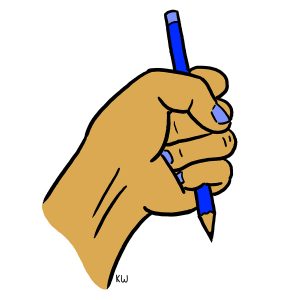
There are many ways to hold onto a drawing tool. Some are better for making different types of lines. Some may be more efficient for your joints, depending on the scale you are at drawing and the equipment you are using.
Two basic stylus grasps are the Tripod/Pencil grip, and the Overhand/Violin Bow grip. Grip is important for control of your stylus, getting the line you want, and preventing injury.
Tripod grips are good for making short, precise lines, and detailing, when you grasp your stylus closer to the point. The close grip also makes it easy to press your stylus firmly into your drawing surface. Slide your hand further down the shaft of your stylus, away from the point, and you can make medium length lines. The more distant grip makes it harder to apply pressure, but so what? There are other grips for that. Tripod grips use your hand and finger muscles. The distant tripod grip can also use your wrist muscles. These grips work on both horizontal and inclined surfaces.
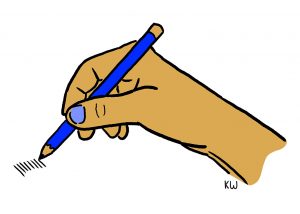
Overhand grips are good for expressive lines, thick lines, drawing in a larger scale, and filling areas. Overhand grips give you more options in using the tip or the side of the stylus, too. Press your forefinger onto the shaft of the stylus with an overhand grip and you can get a lot of pressure. Drawing longer lines loads the shoulder (and occasionally elbow) muscles. Overhand grips tend to work best while drawing on an inclined surface.
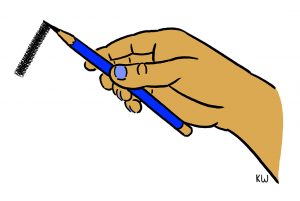
Flip your overhand grip upside down and you get an Underhand grip. This works best for light line weight. Whereas the overhand grip works the muscles in the front (palmar side) of the wrist, the underhand grip will work muscles on the back of the wrist. I’ve seen a couple artists use the underhand grip for lightly blocking in their sketches before they work on shape with the overhand and detail with the tripod.
Why bother with more than one stylus grip? Because changing grips can help reduce stress to your joints and make you more efficient. Using only the tripod grip can overwork your hand and finger muscles. Using only the overhand grip can overwork your shoulder muscles. Mixing up your grips will help distribute the stress of drawing through your different joints, potentially avoiding injury. (For those of you working digitally, changing grip might not be possible, depending on the equipment you use. You will have to experiment!)
If you only use one grip to draw, it is probably the tripod because that is the traditional grip taught in school when we learn to write. Some of you have developed “alterna-tripod” grips that work well for you for writing. If that is the only grip you use to draw, I’m going to class you in the Tripod Only drawing group, just to be efficient.
Learning a new grip will take practice, which will take some time… and I’ve just lost half of you. Why waste valuable drawing time on practice drawing? Because using two grips might save you time spent in recovering from drawing injuries, that’s why. Would you rather “waste” time on practice drawing that will get better as you practice a new grip? Or waste time on crappy drawing because you are injured from only using one grip and stressing your joints?
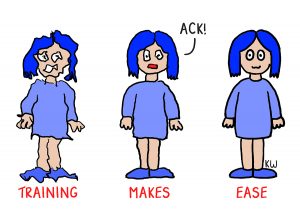
Think like an athlete. Imagine a golfer who insists on playing an entire 18 holes only by putting. I know nothing about golf, but I bet that this golfer is going to come down with an incredible case of “golfer’s elbow,” a.k.a. medial epicondylitis! They’re also going to loose the game because they refuse to use the right sized swing when their trying to hit the ball with a golf club. (I guess that would be a “putter”?) Look at your drawings. Do you work with a lot of variation in your line? Do you value expression or abstraction over detail? Do you mix expressive line with precise line? Do you work on a larger scale? Do you fill in large spaces with charcoal or pencil? Might you benefit from exploring another style of stylus grip?
Remember, drawing is a physical skill, practicing drawing builds coordination as well as efficiency. When you practice drawing, you are building skills the same way any athlete would. Whipping out your sketchbook on the subway and drawing what you see, develops your artist’s version of what a scientist might call “the coordination between gaze behavior, fingertip movements, and movements of a manipulated object.” Or a golfer might call “hand-eye coordination.”
Athletes adapt new techniques and equipment to help improve their performance all the time. Sure, there’s a period of adjustment as muscles and the nervous system learn a new way to work, but ultimately performance and efficiency improve. The same is true of artists adapting to new techniques or equipment.
Here are a couple links to demonstrations of grip variation. I don’t know these artists personally and am not suggesting you subscribe to their series, but they both give a good overview of basic drawing grips. Each artist has their own personality and has slightly different priorities. (If you have a favorite resource re:stylus grip, message me a link on Twitter – @Kriota!)
MyDrawingTutorials.com – How To Control Your Drawing Pencil. Narrated by Ethan Nguyen– gives a good overview of grip variations, shows some pointers (ha!) for hand alignment, and discusses best grips for graphite and charcoal.
Proko.com – How to Hold and Control Your Pencil. Narrated by Stan Prokopenko– is also a great introduction to grip variations. In addition to grip basics Prokopenko also talks about muscle memory, so of course I was sold on this video right away!
I’m not going to say, “Practice makes perfect” because perfect, in my opinion, can be a tad boring. But I will say, “Practice makes ease.” Practicing different grips gives you skills and makes it easier to be yourself.


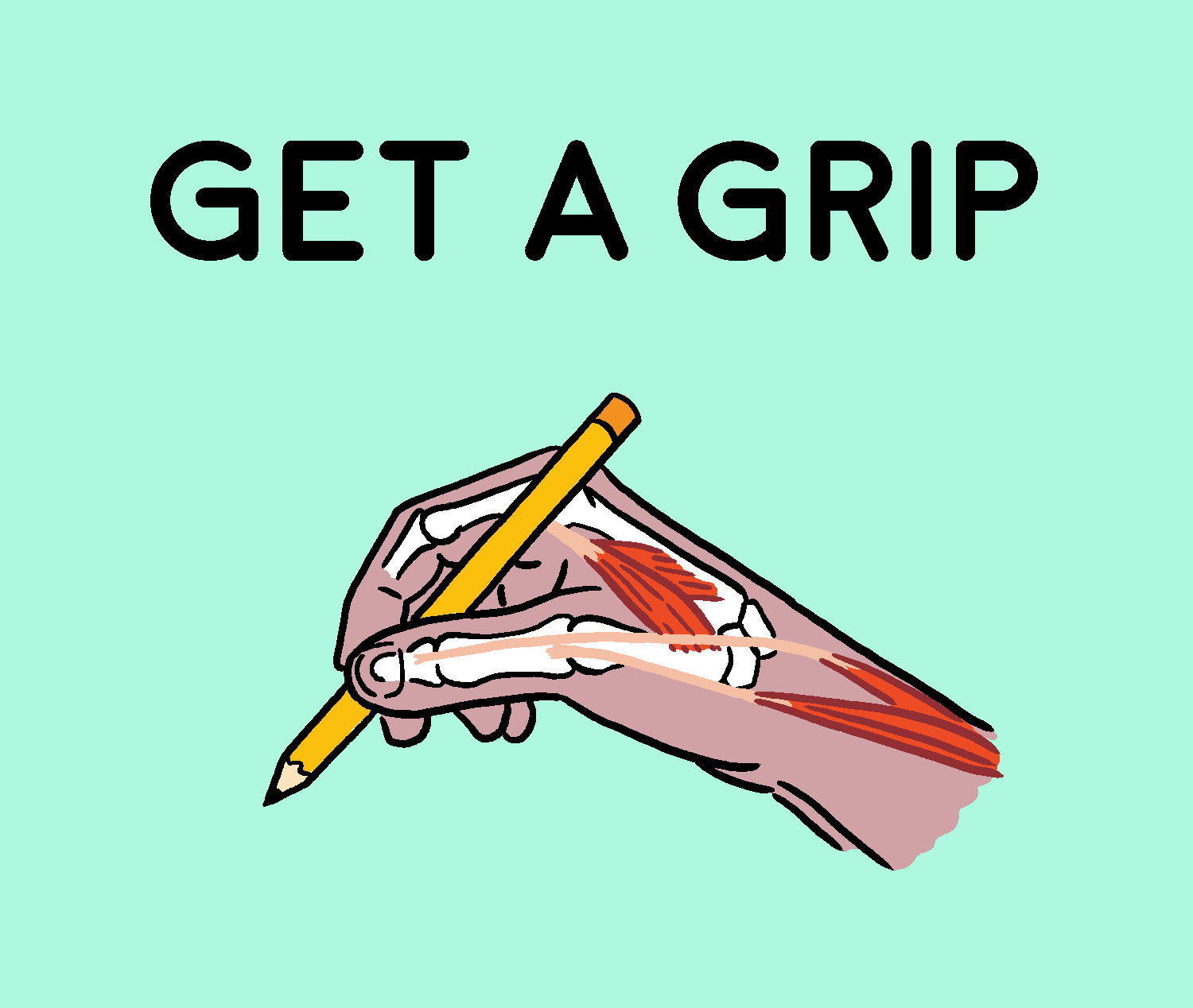






What about the way Erik Larsen holds a pencil?! :)
Comments are closed.